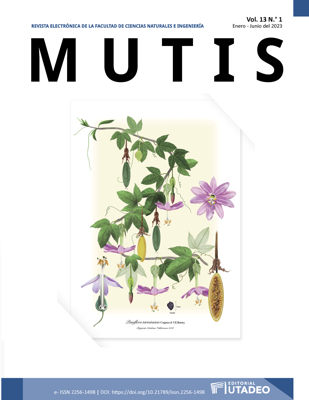
Esta obra está bajo una licencia internacional Creative Commons Atribución-NoComercial-CompartirIgual 4.0.
Esta obra está bajo una licencia internacional Creative Commons Atribución-NoComercial-CompartirIgual 4.0.
Resumen
La anoxia es una condición estresante que es extremadamente dañina para la mayoría de los mamíferos, en tanto lidera la supresión de actividad eléctrica en el córtex cerebral, silenciando los receptores ampa y nmda e inhibiendo las señales pos-sináptica y pre-sináptica de las neuronas, lo que conduce en pocos minutos a la muerte cerebral (Hochachka et al., 1996; Pérez-Pinzón et al., 1992). En contraste, vertebrados ectotérmicos están extremadamente bien adaptados para sobrevivir a las limitaciones de oxígeno (Hochachka & Lutz, 2001): por ejemplo, las tortugas dulceacuícolas, Trachemys y Crysemys, permanecen en el fondo de lagos o estanques durante el invierno por hasta dos semanas entre 16 y 18 °C y de 12 a 18 semanas a 3 °C (Krivoruchko & Storey, 2015). Los estudios realizados sobre esta condición en estas tortugas han identificado la expresión de genes que explican, en buena parte, esta adaptación (Keenan et al., 2015).
Citas
Hochachka, P. W., Buck, L. T., Dollt, C. J. & Landt, S. C. (1996). Unifying theory of hypoxia tolerance: Molecular / metabolic defense and rescue mechanisms for surviving oxygen lack (oxygen sensing /hypoxia defense/ turtle hepatocytes/ turtle brain). Biochemistry, 93, 9493–9498. https://doi.org/10.1073/pnas.93.18.9493
Hochachka, P. W. & Lutz, P. L. (2001). Mechanism, origin, and evolution of anoxia tolerance in animals. Comparative Biochemistry and Physiology - B Biochemistry and Molecular Biology, 130, 435–459). https://doi.org/10.1016/S1096-4959(01)00408-0
Hochscheid, S., McMahon, C. R., Bradshaw, C. J. A., Maffucci, F., Bentivegna, F. & y Hays, G. C. (2007). Allometric scaling of lung volume and its consequences for marine turtle diving performance. Comparative Biochemistry and Physiology, Part A, 148, 360-367. https://doi.org/10.1016/j.cbpa.2007.05.010
Houghton, J. D. R., Cedras, A., Myers, A. E., Liebsch, N., Metcalfe, J. D., Mortimer, J. A. & Hays, G. C., (2008). Measuring the state of consciousness in a free-living diving sea turtle. J Exp Mar Biol Ecol, 356, 115-120. https://doi.org/10.1016/j.jembe.2007.12.008
Howell. E., Dutton, P., Polovina, J., Bailey, H., Parker, D. & Balazs, G. H. (2010). Oceanographic influences on the dive behavior of juvenile loggerhead turtles (Caretta caretta) in the North Pacific. Ocean Mar Biol, 157, 1011-1026. https://doi.org/10.1007/s00227-009-1381-0
Hylland, P., Milton, S., Pek, M., Nilsson, G. E. & L. Lutz, P. (1997). Brain Na+/K+-ATPase activity in two anoxia tolerant vertebrates: Crucian carp and freshwater turtle. Neuroscience Letters, 235, 89-92. https://doi.org/10.1016/S0304-3940(97)00727-1
Kobayashi, D. R., Farman, R., Polovina, J. J., Parker, D. M., Rice M, & Balazs, G. H. (2014). “Going with the Flow” or Not: Evidence of Positive Rheotaxis in Oceanic Juvenile Loggerhead Turtles (Caretta caretta) in the South Pacific Ocean Using Satellite Tags and Ocean Circulation Data. PLoS One, 9(8), e103701. https://doi.org/10.1371/journal.pone.0103701
Kooyman, G. L. (1989). Diverse divers: physiology and behavior, Zoophysiology. Vol. 23. Springer-Verlag. https://doi.org/10.1007/978-3-642-83602-2_13
Krivoruchko, A. & Storey, K. B. (2015). Turtle anoxia tolerance: Biochemistry and gene regulation. Biochimica et Biophysica Acta - General Subjects, 1850(6), 1188-1196. https://doi.org/10.1016/j.bbagen.2015.02.001
Lapennas, G. N. y Lutz, P. L. (1982). Oxygen affinity of sea turtle blood. Resp Physiol, 48, 59-74. https://doi.org/10.1016/0034-5687(82)90050-0
Lutcavage, M. E., y Lutz, P. (1991). Voluntary diving metabolism and ventilation in the loggerhead sea turtle. J Exp Mar Biol Ecol, 147(1991), 287-296. https://doi.org/10.1016/0022-0981(91)90187-2
Lutcavage, M. E., Lutz, P. L. & Baier, H. (1987). Gas exchange in the loggerhead sea turtle Caretta caretta. Journal of experimental biology, 131(1), 365-372. https://doi.org/10.1242/jeb.131.1.365
Pérez-Pinzón, M. A., Rosenthal, M., Lutz, P. L. & Sick, T. J. (1992). Anoxic survival of the isolated cerebellum of the turtle Pseudemis scripta elegans. Journal of Comparative Physiology B: Biochemical, Systemic, and Environmental Physiology, 162(1), 68-73. https://doi.org/10.1007/BF00257938
Polovina, J. J., Howell, E., Parker, D. M. y Balazs, G. H. (2003). Dive-depth distribution of loggerhead (Carretta carretta) and olive ridley (Lepidochelys olivacea) turtles in the central North Pacific: Might deep longline sets catch fewer turtles? Fishery Bulletin, 101, 189-193
Price, E. R., Paladino, F. V., Strohl, K. P., Santidrián-T., P., Klann, K. & Spotila, J.R. (2007). Respiration neonate sea turtles. Comparative Biochemistry and Physiology, Part A, 146, 422-428. https://doi.org/10.1016/j.cbpa.2006.11.034
Storey, K. B. & Storey, J. M. (2004). Metabolic rate depression in animals: transcriptional and translational controls. Biological reviews, Cambridge Philosophical Society, 79(1), 207-233. https://doi.org/10.1017/S1464793103006195
Williard, A. S. (2013). Physiology as Integrated Systems. En Wyneken, J., Lohmann, K. & Musick, J. (eds.), The Biology of Sea Turtles (Vol. 3) (pp. 1-30). CRC Press. https://doi.org/10.1201/b13895-2

 PDF
PDF
 FLIP
FLIP












